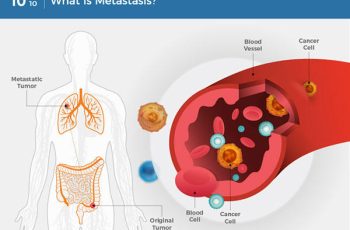How Many Cancer Cells Are in the Human Body?
Cancer, a word that strikes fear into the hearts of many, is as complex as it is frightening. But have you ever wondered how many cancer cells are present in the human body at any given time? This article delves into the intricacies of cancer cells, their growth, detection, and the impact they have on our health.
Introduction to Cancer Cells
What Are Cancer Cells?
Cancer cells are cells that have undergone genetic mutations, allowing them to grow and divide at an uncontrolled pace. Unlike normal cells, which have a lifecycle and a programmed death, cancer cells defy this cycle, leading to the formation of tumors and potential spread throughout the body.
The Origin of Cancer Cells in the Human Body
Cancer cells can originate from almost any tissue in the body. They begin as normal cells that undergo mutations in their DNA, often due to factors like genetic predisposition, environmental exposures, or lifestyle choices.
The Number of Cancer Cells in the Human Body
Factors Influencing the Number of Cancer Cells
The number of cancer cells in a human body can vary widely, influenced by the type of cancer, its stage, and how aggressively it’s growing. Other factors include the individual’s immune response and the effectiveness of any treatments being applied.
Estimating the Number of Cancer Cells
Estimating the exact number of cancer cells in the body is challenging. However, researchers use various methods, including imaging and biopsy analyses, to get an approximation. In some cases, the number can range from thousands to billions, depending on the cancer’s progression.
The Growth and Spread of Cancer Cells
How Cancer Cells Multiply
Cancer cells multiply through a process called mitosis, similar to normal cells. However, they do so without the usual regulatory checkpoints, leading to rapid and uncontrolled growth.
The Spread of Cancer Cells: Metastasis
Metastasis is the process by which cancer cells spread from their original site to other parts of the body. This is often what makes cancer particularly dangerous, as it can affect multiple organs and tissues.
Detecting and Counting Cancer Cells
Modern Techniques in Cancer Detection
Advancements in medical technology have led to more precise methods of detecting cancer cells, including liquid biopsies, imaging technologies, and molecular diagnostics. These tools help in estimating the number of cancer cells and monitoring the disease’s progression.
Challenges in Counting Cancer Cells
Despite technological advancements, accurately counting cancer cells remains a challenge. This is due to the cells’ ability to mimic normal cells, hide within tissues, and even resist detection by the immune system.
The Impact of Cancer Cells on the Human Body
Physical and Psychological Effects
The presence of cancer cells can have wide-ranging effects on the body, from physical symptoms like fatigue and pain to psychological impacts such as anxiety and depression. The extent of these effects often depends on the cancer’s stage and location.
The Importance of Early Detection
Early detection of cancer can significantly improve the chances of successful treatment. It allows for interventions before the cancer has spread extensively, reducing the number of cancer cells the body must combat.
Advances in Cancer Research
Recent Breakthroughs
Recent years have seen significant breakthroughs in cancer research, including the development of targeted therapies and immunotherapies. These treatments aim to reduce the number of cancer cells while minimizing damage to healthy tissues.
The Future of Cancer Treatment
The future of cancer treatment looks promising, with ongoing research into gene editing, personalized medicine, and more effective detection methods. These advances hold the potential to significantly reduce the prevalence and impact of cancer cells in the human body.
Conclusion
Understanding the number of cancer cells in the human body is a complex but crucial part of combating this disease. While the exact number can vary greatly, advances in detection and treatment are continuously improving our ability to manage cancer. Early detection and ongoing research are key to reducing the impact of cancer cells and moving towards a future where cancer can be effectively controlled or even cured.
FAQs
- Can cancer cells ever be completely eliminated from the body?
- Yes, in many cases, cancer cells can be completely eliminated from the body, especially if the cancer is detected early and treated effectively. Treatments such as surgery, chemotherapy, radiation therapy, and immunotherapy can successfully remove or destroy cancer cells. However, the possibility of completely eliminating cancer cells depends on the type of cancer, its stage, and how well it responds to treatment. In some cases, treatments aim to control the cancer and keep it from spreading rather than completely eliminating it.
- How do lifestyle choices affect the number of cancer cells?
- Lifestyle choices can significantly impact the risk of developing cancer and, by extension, the number of cancer cells in the body. Factors such as smoking, excessive alcohol consumption, a diet high in processed and red meats, physical inactivity, and exposure to carcinogens can increase the risk of mutations that lead to cancer cell formation. Conversely, maintaining a healthy diet, regular physical activity, avoiding tobacco and limiting alcohol consumption can reduce the risk of cancer.
- Why is cancer more aggressive in some people than in others?
- Cancer’s aggressiveness can vary widely among individuals due to a combination of genetic, environmental, and lifestyle factors. Some people may have a genetic predisposition that makes their cancer more aggressive or resistant to certain treatments. Additionally, the type of cancer, its genetic makeup, and how early it is detected and treated can influence its aggressiveness. The body’s immune response to cancer cells also plays a crucial role in how aggressively the cancer behaves.
- Can someone have cancer cells in their body without having cancer?
- It’s possible for individuals to have cells with cancerous mutations that have not yet formed a detectable cancer. The body’s immune system often identifies and destroys abnormal cells before they can form tumors. However, when these cells escape the immune system’s surveillance and begin to multiply uncontrollably, cancer can develop. Regular screenings and monitoring are important for early detection and prevention.
- How do cancer treatments target cancer cells without harming normal cells?
- Many cancer treatments are designed to specifically target the unique characteristics of cancer cells, such as their rapid division rate or specific molecular markers. For example, targeted therapy uses drugs or other substances to precisely identify and attack cancer cells, often leaving normal cells unharmed. Immunotherapy boosts the body’s natural defenses to fight the cancer. However, some treatments like chemotherapy and radiation can affect normal cells as well, leading to side effects. Research is ongoing to develop more precise treatments that minimize harm to healthy cells.
By understanding more about cancer cells, their behavior, and the impact of various factors on their development and growth, individuals can better navigate the complexities of cancer prevention, detection, and treatment.





